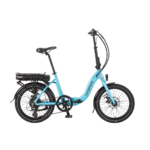On thinking about this, if the brake pipe went from the lever cylinder to a splitter and thence to both slave cylinders, any adjustment of the TPA should have an equal effect on both sides.
As things are, the pipe goes to one side then via a jumper pipe to t'other, but presumably the end result should be the same.
Absolutely correct, there is a balance tube which connects one slave cylinder to the other, so the pressure in each one should be the same.
If it isn't (and we seem agreed that it isn't), I wonder why ...
The pressure is the same in each slave cylinder, it has to be because they are connected together by the balance tube.
if one piston moves before/further than the other, and/or it doesn't retract as much, I reckon that's got to be down to friction, so my money's on tolerances, either in the fit of the pistons in the slave cylinders, or in the drag induced by the seals.
This is exactly what I am thinking. If one of the slave cylinders has a piston which, for the want of a better phrase, is more sticky than the other, the less sticky piston will move first, and it does. This is why when I turn the TPA adjuster on the brake lever (this just forces a bit of oil down the tube in the same way that pulling on the lever does) only one piston moves and takes up the wear in the pad. The sticky piston just sits there building up a progressively larger gap between brake pad and rim.
When you pull on the lever to stop the bike, the free piston moves first until the pad comes into contact with the rim. When it can't move any further and the rider continues to pull, the pressure in the system builds until it moves the sticky piston. That then makes contact with the rim and the braking action begins. I am only talking about very small pressure differentials here and the braking action is not effected by this, but it renders the TPA adjuster almost useless. As you have already mentioned the only way to take up the pad wear in this situation is to slacken off the sticky slave cylinder clamp and physically move the cylinder and pad closer to the rim. This may not be a major drama for some people, but it irritates me because these are expensive brakes and I bought them because I do a lot of miles and I thought it would make regular brake adjustment easy.
I have had quite lengthy email exchanges with Magura over this issue and I have been relentless in getting them to acknowledge that it is a problem. Eventually, they admitted that the design is such that if one slave cylinder has slightly more friction than the other, exactly what I have described will happen. It's pi$$ poor, I'm very disappointed with these brakes and as I have said before, anyone thinking of buying a set should have this in mind.
I still intend to thrash them with a big mallet (well gently tap them up to the rim) as you suggest, but I can't see any reason why it should alter the situation. Unless the tapping action somehow frees the sticky piston and I achieve frictional balance on both sides. That would be good.






